Tomoko Sawada, as an artist, probes the relationship between one's inner life and outward appearance,
creating powerful works through thought-provoking photographic and video expressions. Her abundant
creativity spills over into spatial performances and the completion of the memorable SELF/OTHERS photo
exhibition.
We spoke to her about the origins of her ideas that so captivate viewers, her artistic endeavors, and the
state of the increasingly globalized New Cosmos of Photography from her position as a judge of the
contest.
I find the ideas that inform my work in everyday life. When I was just starting out as an artist, the contemporary artist Noboru Tsubaki, my teacher when I was a student, advised me to make as many acquaintances as possible from different walks in life. His reasoning was that if you get too involved with just artists and other people in the same scene, your world view invariably shrinks and you lose your connection with broader society. The more ordinary your sensations and sensibilities, the better.
That struck a chord with me, and so I deliberately created chances to interact with people from other fields and to come in contact with new scenes and circles. By attending theatrical productions, musicals, concerts, and other stage performances, I've been able to draw lots of inspiration and motivation from worlds outside of contemporary art and photography. For example, I've borrowed ideas from stage props I've seen at concerts when designing my own exhibition layouts.
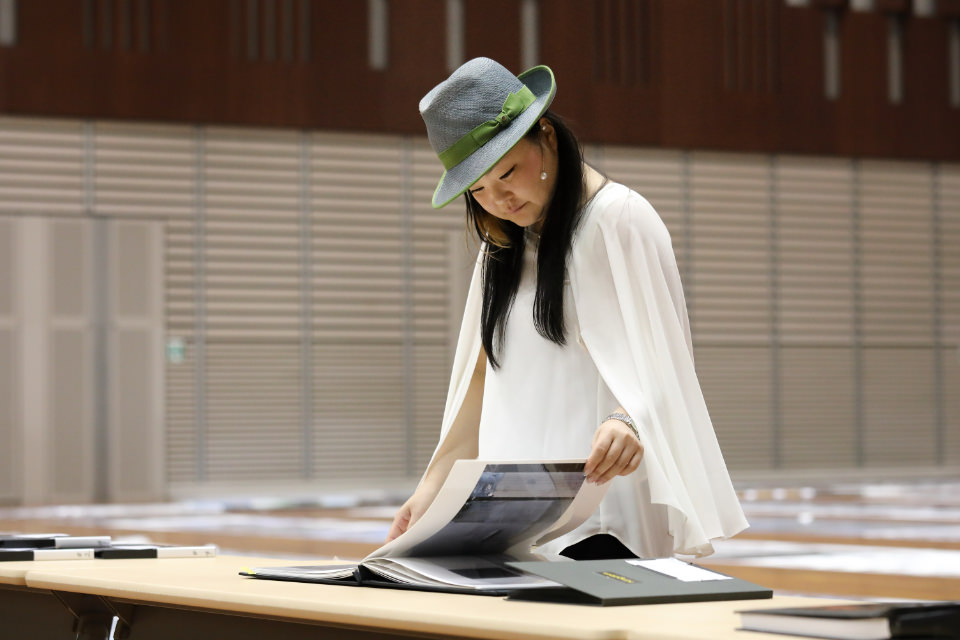
Sudo and I already had a personal connection before the exhibition. But while preparing for this co-exhibition, it was really the first time we had conversed in depth about each other's work.
What we discovered was Sudo had always wanted to be a boy, whereas I had always been myself and had never wanted to be anyone else. She thinks of her current appearance as something she's borrowed, while in her work, she's searching for the appearance she wants to have. It seems as if her creations come from a place of wanting to efface herself. In my case, I am who I am. Even in disguise, I'm still me. It's all me, me, and me! So in contrast to Sudo, who wants to disappear, I want to amplify myself. Through our conversations we found this major difference between us. Another difference is Sudo uses other models in her work. She wants to be someone else, and yet that yearning defines her as her. That restless relationship shows in her work. For me, I've never wanted to be anyone else. And yet when other people look at my work, it seems they sense they are looking at themselves. People sometimes say my photos make them feel as if they are peering into a looking-glass of the soul.
So although we use the same technique of self-portraiture, we are at opposite ends of the spectrum. This is a source of wonderment and curiosity for both of us. That's why we chose the title SELF/OTHERS.

SELF/OTHERS © TOMOKO SAWADA
I've recently taken a real interest in the idea of masks and veils. Both are facial coverings but they have very different purposes.
When I wear a veil, for example, I'm still Tomoko Sawada underneath. But when I wear the mask of say Hyottoko, a stock comical male figure, then I become Hyottoko. I put on a mask, rather than a veil, with the assumption that I will be Hyottoko or perform as Hyottoko.
My works are often thought of as masks, and when I'm asked who I am playing in a performance, the honest truth is that it's a veil.
The pieces I exhibited this time included Bloom, a number of works that were serialized in the beauty magazine etRouge. For this series, I took my cue from each issue's theme and transformed myself accordingly. You apply makeup directly on your face. But it's interesting that depending on the person, makeup either acts as a mask or a veil.
Masks and veils are a reoccurring subtheme of mine. I see them as keywords connected to the true nature of my work.
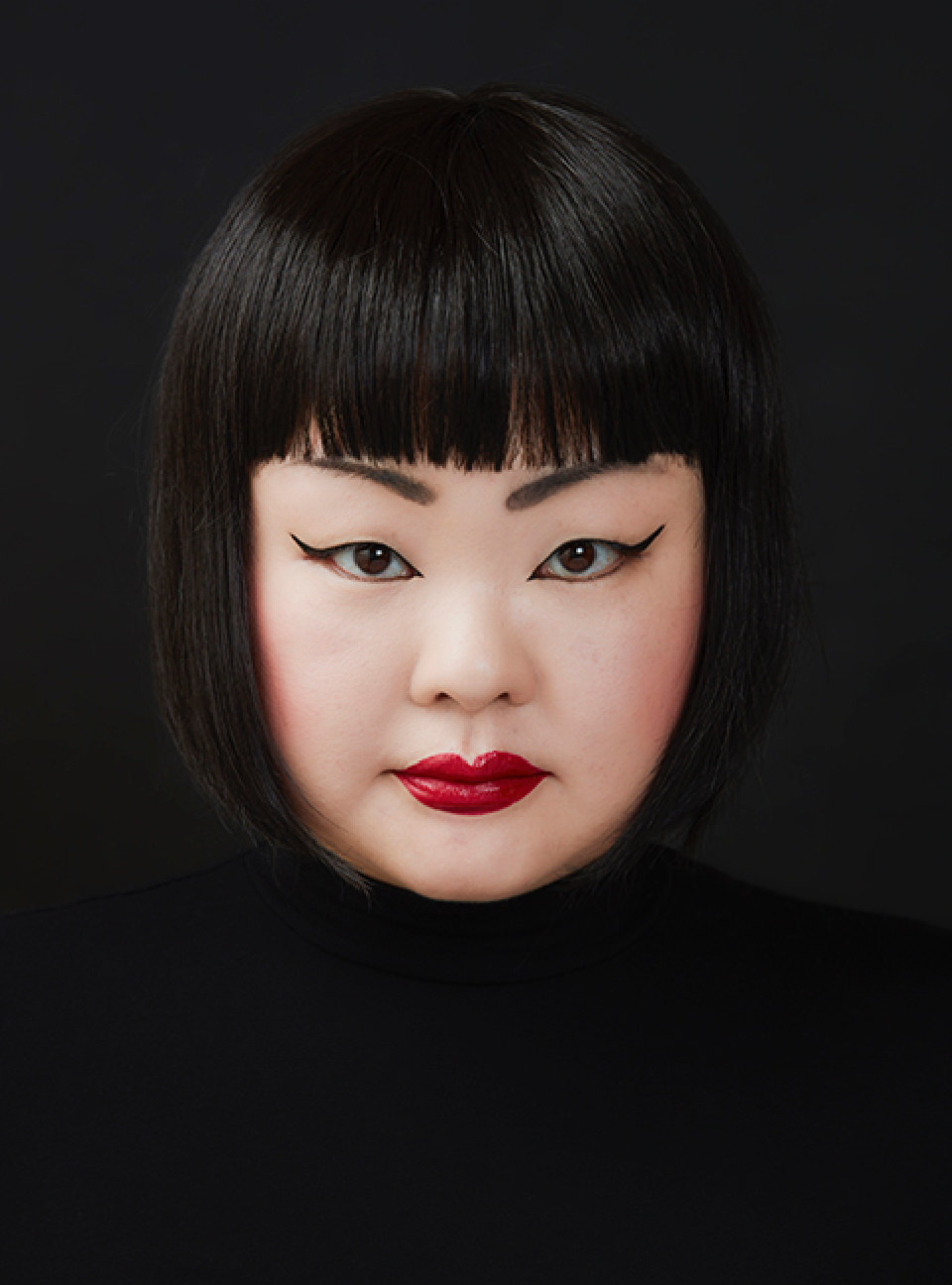
SELF/OTHERS © TOMOKO SAWADA
Living in New York for a number of years could be called a turning point. For me, living in New York changed my personality in a good way. Before then, I had a rather rigid personality, like I was wearing a suit of armor all the time.
For example, in New York, unlike Japan, you often cannot arrive at your appointments on time even if you set out on time. That's because trains suddenly stop on their way or they don't come on schedule. There were lots of things that didn't progress as planned for reasons beyond my control. I think being in the midst of those situations mellowed my personality.
Kageboshi is my third video work and the first time I've used a Japanese title. Since it was a solo exhibition, I also showed Mask, a video work that I hadn't presented in Tokyo before.
I don't make any differentiation between photos and videos as media, though photographs are easier to control. Most of the flashes of inspiration that come to mind are in the form of still images and most of my works have been photographs. All three of my video works have been very close to photographs. You could say they are photographic video works, something in between photographs and videos.
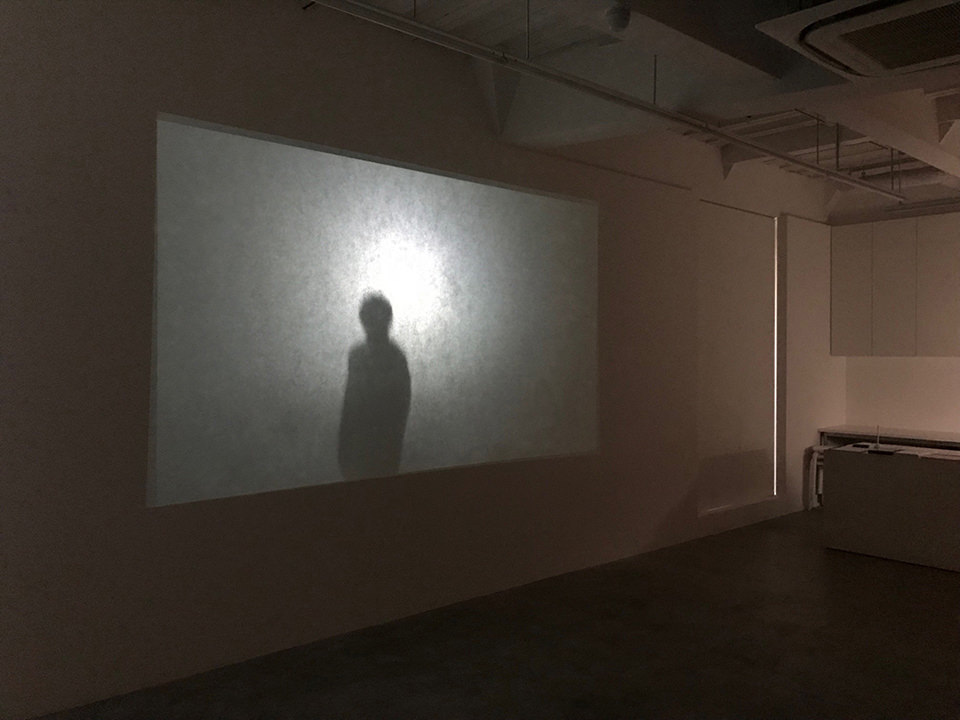
Kageboshi (Installation view) © TOMOKO SAWADA
I think of both photographs and videos as one means of expression. There are an infinite variety of expressive means in the world. Besides photos and videos, you have sculpture, industrial arts, writing, singing, dance — all means of expression.
When I judge, I look at whether the physical work reflects the artist's own theme or whether the artist created the work out of interest in the technique. Internally, I guess I see videos and photos as being the same thing.
Regardless of the nationality of the artist, what comes across is that they are completely invested in their work. You can sense something like an aura surrounding a work crafted with sincerity.
This is true of the 2018 Grand Prize winner Song-Nian Ang. I personally do not press the shutter button when making my works. So as an expressionist who uses photography, what Song-Nian Ang did felt, on one level, like a fresh breeze, like opening up an air vent.
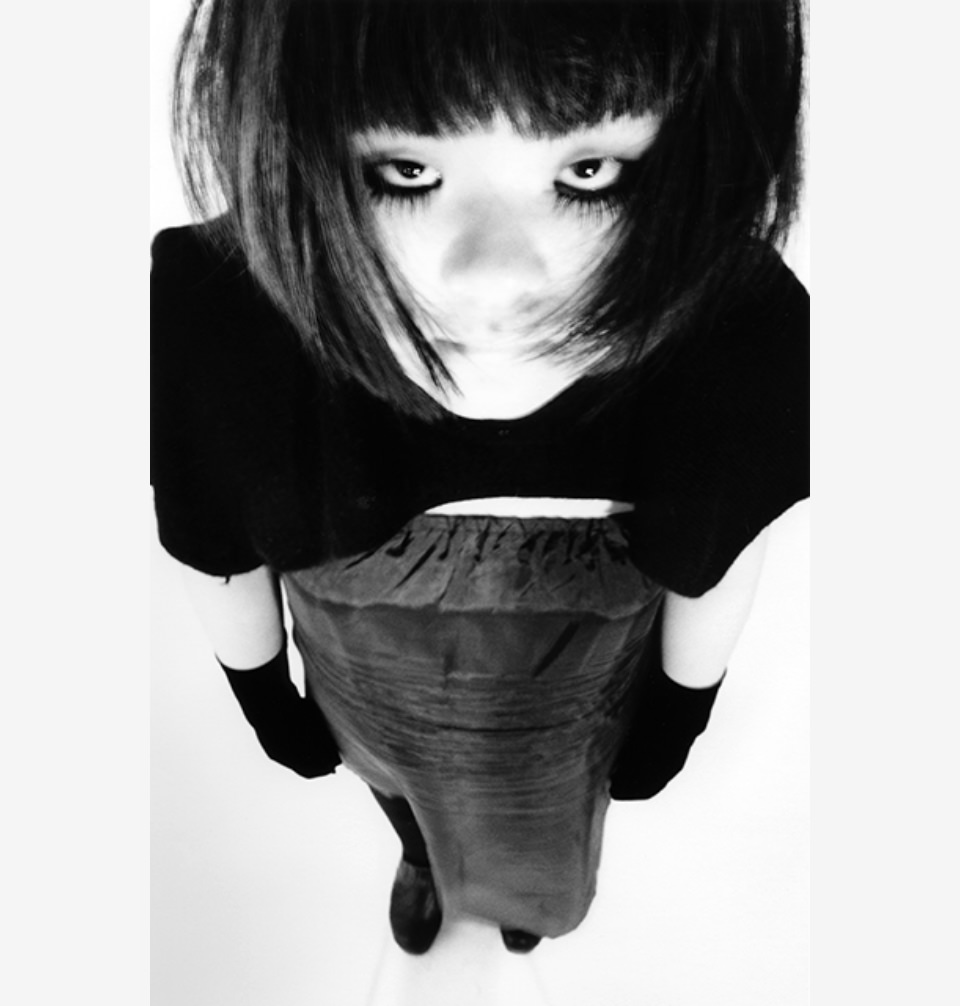
from <Early Days> © TOMOKO SAWADA
It's easy to keep your mind on works in progress and works you are about to start. I think it's natural for nearly everyone. But I deliberately set aside time to have a sort of dialogue with my past work. I think it's incredibly important to view your past work objectively and engage with it, because the process improves your ability.
My other point would be that it's so important how you live each day because your life experiences will seep into all your work. If I were to advise someone wanting to be an artist, I would say live your life to the fullest.
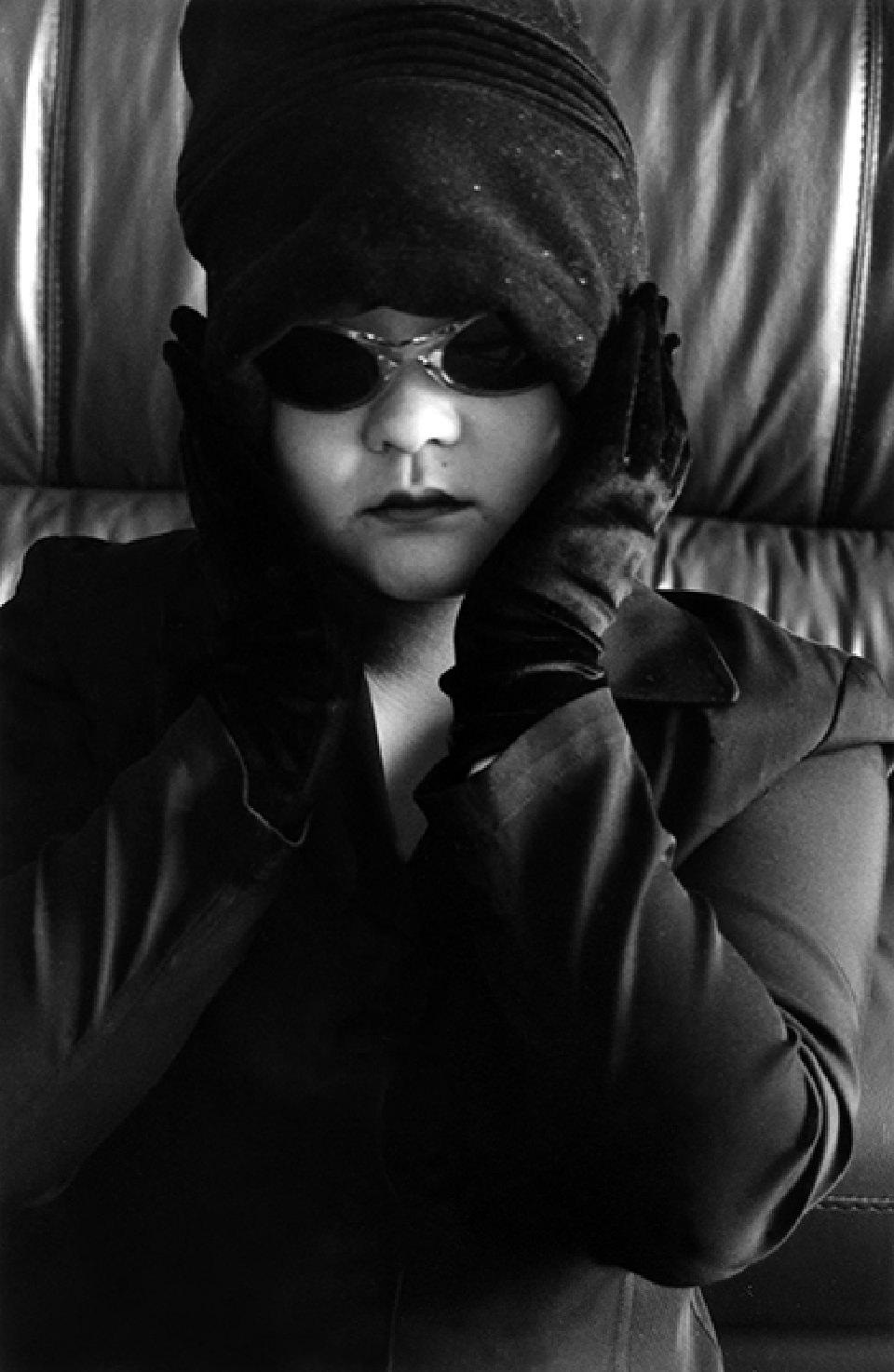
from <Early Days> © TOMOKO SAWADA
Born in Kobe City in 1977, Sawada completed studies as a photography class research student at Seian University of Art and Design. Since her student days, she has developed works on the theme of the relationship between one's inner life and outward appearance through self-portrait techniques. Her debut work ID400 won an Excellent Award at the 2000 New Cosmos of Photography. She has won the 2004 Kimura Ihei Memorial Photography Award and The Twentieth Annual ICP Infinity Award for Young Photographers from the New York International Center of Photography, among others. Her work has been exhibited around the world. Sawada's publications include illustrated books as well as collections of photographs.